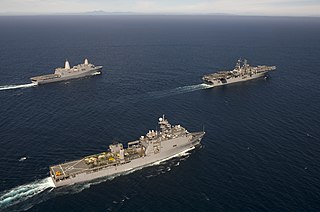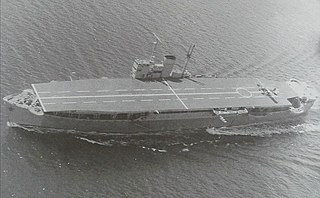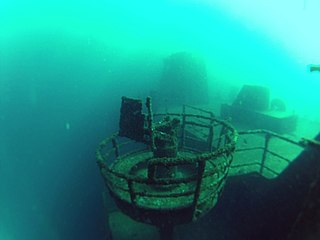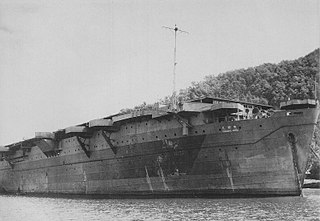 W
WAn amphibious assault ship is a type of amphibious warfare ship employed to land and support ground forces on enemy territory by an amphibious assault. The design evolved from aircraft carriers converted for use as helicopter carriers. Modern ships support amphibious landing craft, with most designs including a well deck. Coming full circle, some amphibious assault ships also support V/STOL fixed-wing aircraft, now having a secondary role as aircraft carriers.
 W
WAn amphibious warfare ship is an amphibious vehicle warship employed to land and support ground forces, such as marines, on enemy territory during an amphibious assault. The largest fleet of these types is operated by the United States Navy.
 W
WAkitsu Maru (あきつ丸) was a Japanese landing craft depot ship and escort aircraft carrier operated by the Imperial Japanese Army (IJA). In some sources Akitsu Maru and her sister ship Nigitsu Maru (にぎつ丸) are also considered to be the first amphibious assault ships.
 W
WAl Munassir was an amphibious warfare vessel operated by the Royal Navy of Oman. It was purchased to enable the kingdom to respond to threats to the strategically important Musandam Governorate. The vessel was launched in 1978 and, after decommissioning, was sunk as an artificial reef in 2003. It is now a popular diving site.
 W
WAn amphibious transport dock, also called a landing platform/dock (LPD), is an amphibious warfare ship, a warship that embarks, transports, and lands elements of a landing force for expeditionary warfare missions. Several navies currently operate this kind of ship. The ships are generally designed to transport troops into a war zone by sea, primarily using landing craft, although invariably they also have the capability to operate transport helicopters.
 W
WAttack transport is a United States Navy ship classification for a variant of ocean-going troopship adapted to transporting invasion forces ashore. Unlike standard troopships – often drafted from the merchant fleet – that rely on either a quay or tenders, attack transports carry their own fleet of landing craft, such as the landing craft, vehicle, personnel (LCVP) or Higgins boat.
 W
WA dock landing ship is an amphibious warfare ship with a well dock to transport and launch landing craft and amphibious vehicles. Some ships with well decks, such as the Soviet Ivan Rogov class, also have bow doors to enable them to deliver vehicles directly onto a beach. Modern dock landing ships also operate helicopters.
 W
WThe Enforcer is a ship design created by Royal Schelde following the design and building of HNLMS Rotterdam. HNLMS Rotterdam was jointly developed by the Royal Netherlands Navy and the Spanish Navy.
 W
WKumano Maru (熊野丸) was a landing craft carrier with a small flight deck built for the Imperial Japanese Army during World War II. Launched and completed in early 1945, the ship saw no significant action.
 W
WLanding helicopter assault (LHA) is the United States Navy's hull classification symbol for the general purpose helicopter-carrying amphibious assault ships of the Tarawa and America classes.
 W
WA landing helicopter dock (LHD) is a multipurpose amphibious assault ship which is capable of operating helicopters and has a well deck. The United States Navy (USN) and the Royal Australian Navy (RAN) use the term as a hull classification symbol.
 W
WLanding platform helicopter (LPH) is a term used by some navies to denote a type of amphibious warfare ship designed primarily to operate as a launch and recovery platform for helicopters and other VTOL aircraft. As such, they are considered a type of helicopter carrier.
 W
WA Landing ship, infantry (LSI) or infantry landing ship was one of a number of types of British Commonwealth vessels used to transport landing craft and troops engaged in amphibious warfare during the Second World War. LSIs were operated by the Royal Navy, British Merchant Navy, Royal Canadian Navy, Royal Indian Navy, and Royal Australian Navy. They transported British Commonwealth and other Allied troops in sea assaults and invasions throughout the war.
 W
WLanding Ship, Tank (LST), or tank landing ship, is the naval designation for ships first developed during World War II (1939–1945) to support amphibious operations by carrying tanks, vehicles, cargo, and landing troops directly onto shore with no docks or piers. This enabled amphibious assaults on almost any beach.
 W
WThe Sea Control Ship (SCS) was a small aircraft carrier developed and conceptualized by the United States Navy under Chief of Naval Operations Elmo Zumwalt during the 1970s. Currently the term refers to naval vessels that can perform similar duties. The SCS was intended as an escort vessel, providing air support for convoys. It was canceled after budgetary cuts to the US Navy.
 W
WThe Siebel ferry (Siebelfähre) was a shallow-draft catamaran landing craft operated by Germany's Wehrmacht during World War II. It served a variety of roles in the Mediterranean, Baltic and Black Seas as well as along the English Channel. They were developed for Operation Sea Lion in 1940, the cancelled German invasion of England. Siebel ferries continued performing after the war's end in 1945.